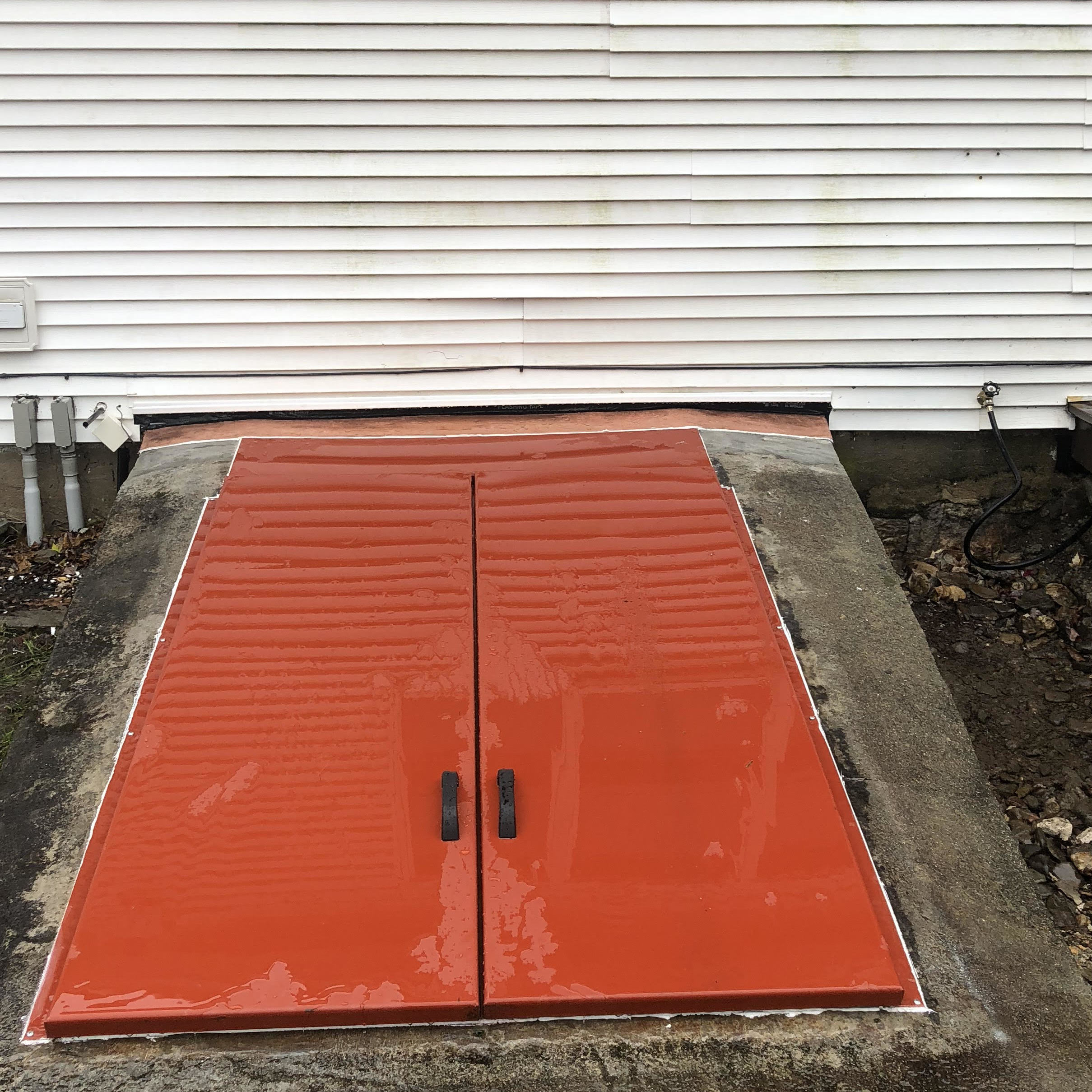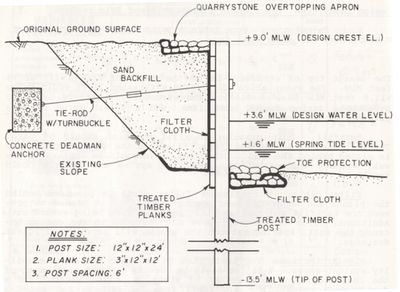The Importance of Proper Maintenance for Bulkhead on Lake Livingston
Wiki Article
Exploring the Various Usages of Bulkhead Structures in Modern Design
Bulkhead frameworks play a significant duty in modern-day architecture, offering both useful and aesthetic purposes. They can specify rooms, enhance storage space options, and improve illumination. In commercial setups, they work as focal factors that mirror brand name identification - Bulkhead on Lake Livingston. In addition, their combination commonly supports sound administration and lasting techniques. Comprehending the complete extent of their applications discloses much regarding modern layout trends and customer experience. What ingenious usages of bulkheads might emerge in the future?Defining Bulkhead Structures
Bulkhead structures play an important duty in modern-day design, functioning as crucial elements in various building styles. These frameworks are typically specified as elevated platforms or ceilings, usually used to hide mechanical systems, electrical wiring, or plumbing. Bulkheads can be found in both industrial and domestic settings, where they supply a seamless blend of functionality and looks. Their layout can integrate lights components and other attractive components, boosting the general visual charm of an area.Typically created from products such as metal, wood, or drywall, bulkheads can be customized to fit the architectural style and demands of the structure (Bulkhead on Lake Livingston). They serve not just to hide unpleasant framework yet also to create specified zones within open areas. By handling the flow of a space, bulkheads add to the spatial organization, making them a significant element of contemporary building technique. Their meaning encapsulates both visual and practical measurements.
Useful Applications in Residential Layout
Bulkhead structures play a crucial role in residential layout by promoting room optimization techniques that make the most of functional locations. They add aesthetic layout elements that boost the visual charm of living rooms. Furthermore, these frameworks provide important architectural assistance services, guaranteeing the integrity and safety of the home.Space Optimization Methods
As modern domestic designs significantly focus on efficient use room, innovative strategies emerge to make best use of capability without compromising aesthetics. One noticeable method involves the combination of bulkhead frameworks, which can mark areas while providing vital storage space options. These structures can be used to develop vertical storage devices that enhance both company and access. Furthermore, multi-functional furnishings, such as convertible couches and collapsible tables, matches bulkhead layouts, allowing spaces to adapt to differing needs. Open layout further enhance spatial flow, urging adaptability being used. Integrating integrated shelving and recessed lighting within bulkheads also adds to a structured environment, ensuring that every inch of space is used properly and sympathetically within the overall layout.Aesthetic Design Aspects

Architectural Assistance Solutions
In modern-day domestic design, a reliable structural support solution is crucial for preserving the honesty of rooms while optimizing design and capability. Bulkhead frameworks play a significant function in this situation, working as both assistance and partitioning aspects. They can conceal mechanical systems, such as pipes and electrical circuitry, while supplying reinforcement to the ceiling and floor systems. By purposefully putting bulkheads, architects can develop specified locations within open layout, improving use without jeopardizing architectural stability. Furthermore, these structures can fit illumination fixtures, adding to both aesthetics and practicality. To summarize, bulkhead structures are indispensable in household style, using flexible assistance solutions that boost both the functionality and visual charm of living areas.Enhancing Visual Appeals in Commercial Rooms
When industrial spaces embrace cutting-edge bulkhead structures, they not just specify physical limits but also considerably enhance the overall visual appeals of the atmosphere. These architectural elements function as aesthetic prime focus, drawing attention and developing a feeling of intrigue. By incorporating diverse materials such as glass, timber, or steel, bulkheads can mirror a brand's identity and objective, adding to a natural layout.The calculated placement of bulkheads can control light and darkness, including deepness and dimension to otherwise flat areas. This interplay can change an industrial location right into a welcoming ambience, urging client engagement. Furthermore, the use of color and appearance in bulkhead layout can evoke specific emotions, improving the overall customer experience. Inevitably, the thoughtful combination of bulkhead structures raises the aesthetic allure of industrial rooms, making them not only practical yet also visually charming, thereby promoting a lasting perception on visitors.
Acoustic Performance and Sound Monitoring
Effective acoustic efficiency plays a crucial duty in modern-day style, especially within business rooms where sound monitoring is vital. Bulkhead frameworks can greatly improve acoustic top qualities by soaking up audio, reducing reverberation, and mitigating noise transfer between locations. These features are especially valuable in settings such as movie theaters, restaurants, and offices, where clear communication and an enjoyable auditory experience are paramount.The critical positioning and layout of bulkheads can assist develop sound-buffer areas, efficiently separating loud locations from quieter ones. Products made use of in bulkhead building, such as soft surfaces and acoustic panels, contribute to their sound-dampening capabilities. In addition, the consolidation of bulkheads enables the combination of sound-absorbing components without jeopardizing visual charm. By dealing with acoustic performance, architects can produce unified environments that enhance comfort, enhance customer experience, and advertise efficiency, making bulkheads a crucial part in the style of contemporary business rooms.
Integrating Bulkheads for Efficient Area Usage
Commonly overlooked, the assimilation of bulkheads in building style can considerably boost room use in modern-day structures. These architectural elements offer numerous functional purposes, providing a method to conceal mechanical systems, electric circuitry, and plumbing without endangering looks. By strategically positioning bulkheads, engineers can create defined areas within open flooring plans, therefore assisting in better organization and circulation.Furthermore, bulkheads can incorporate storage options and lights functions, making best use of the performance of or else lost vertical area. In residential settings, they might delineate areas such as cooking areas or living locations, while in commercial areas, they can enhance the efficiency of layouts by plainly noting pathways and workplace.
Ultimately, the thoughtful integration of bulkheads adds to a much more aesthetically attractive and orderly atmosphere, enabling adaptable areas that can progress with the requirements of their passengers. This technique not just maximizes space but likewise cultivates a much more unified communication between form and function.
Bulkheads in Public Style

Building Visual Enhancements
While lots of architectural elements goal for functionality, bulkheads in public architecture serve a dual function by enhancing aesthetic allure. These structures often develop aesthetic rate of interest through their layout, integrating seamlessly with bordering aspects. By employing different materials, textures, and shades, bulkheads can add to a special identity for public rooms, such as airports, galleries, and libraries. Their critical positioning aids to define areas, guiding visitors while including depth to the general design. Furthermore, see this site bulkheads can emphasize lighting, creating dynamic ambiences that change throughout the day. This aesthetic enhancement not only boosts the visitor experience but also fosters a local color, making bulkheads an essential factor to consider in contemporary public design. Overall, bulkheads personify the combination of visit the website form and feature.
Architectural Assistance Solutions
As engineers look for innovative methods to improve the structural stability of public spaces, bulkheads arise as important elements in the layout and construction process. These frameworks offer critical assistance, specifically in areas subject to hefty foot web traffic or dynamic tons. By dispersing weight equally, bulkheads assist stop architectural failure while enabling versatile design choices. In large locations, such as stadiums and convention centers, bulkheads are typically integrated into the general architectural structure, making certain security and safety. Additionally, they can assist in the consolidation of energies and mechanical systems, contributing to the efficiency of space usage. Ultimately, bulkheads stand for a vital option in modern public style, enhancing both performance and protection in community-focused environments.Environmental Defense Steps
Including environmental management steps right into public style has come to be progressively essential as city designers prioritize sustainability together with architectural support. Bulkhead frameworks serve a double objective in this respect, serving as obstacles against erosion and flooding while all at once improving the aesthetic allure of metropolitan landscapes. Their design usually includes natural environments such as vegetation, which can boost air quality and give environments for wild animals. Furthermore, bulkheads can be engineered with absorptive products that enable water absorption, reducing drainage and promoting groundwater recharge. This combination of environmental considerations not only protects the environment however likewise cultivates neighborhood resilience against environment change. By utilizing bulkheads efficiently, engineers add to lasting additional resources city development that aligns with contemporary environmental objectives.Future Trends in Bulkhead Style
Emerging fads in bulkhead style show a growing focus on sustainability, development, and performance in modern design. Developers are increasingly incorporating environmentally friendly products, such as recycled composites and bioplastics, to decrease environmental influence. Furthermore, the combination of smart technology is coming to be prevalent, enabling bulkheads to offer multi-functional objectives, including energy storage and environment control.
In urban settings, modular bulkhead systems are getting traction, offering adaptability in style and convenience of installation. These systems can be adapted to various landscapes, permitting effective room use. Additionally, visual considerations are evolving; bulkheads are currently being designed to enhance aesthetic charm, frequently including artistic aspects that resonate with neighborhood society.
As climate durability ends up being a top priority, future bulkhead styles will likely focus on flood protection and stormwater monitoring, ensuring architectural honesty while dealing with ecological difficulties. This change signifies an all natural approach to design that meets both human requirements and eco-friendly duties.
Frequently Asked Questions
What Products Are Frequently Used for Bulkhead Building And Construction?
Common products for bulkhead building consist of concrete, steel, hardwood, and composite products. These options offer resilience, architectural honesty, and resistance to environmental variables, making them ideal for different applications in building and engineering projects.Exactly How Do Bulkheads Impact Structure Power Efficiency?
Bulkheads boost constructing power performance by giving thermal insulation and minimizing air leakage (Bulkhead on Lake Livingston). They help maintain indoor temperatures, consequently decreasing home heating and cooling demands, ultimately resulting in lower power costs and enhanced ecological sustainabilityAre There Any Type Of Structure Codes Specific to Bulkhead Frameworks?
Yes, building codes certain to bulkhead structures exist, differing by place. These laws generally deal with safety, architectural honesty, and accessibility, making certain that bulkheads satisfy needed standards for construction and layout within an offered territory.Can Bulkheads Be Conveniently Modified or Eliminated Later On?
Bulkheads can usually be modified or removed, depending upon their design and building. Such modifications may call for mindful preparation and adherence to structure codes to ensure structural honesty and safety are kept throughout the procedure.What Are the Prices Connected With Installing Bulkhead Frameworks?
The costs related to mounting bulkhead frameworks can vary considerably, generally influenced by materials, layout complexity, and labor. Typically, expenses vary from modest to high, relying on the job's details needs and place.Bulkhead structures play an important role in modern-day architecture, serving as vital elements in various structure styles. Bulkhead structures play an essential duty in residential style by facilitating area optimization approaches that make the most of useful locations. Typically forgotten, the assimilation of bulkheads in architectural layout can greatly improve room utilization in modern buildings. As designers look for ingenious means to enhance the structural stability of public rooms, bulkheads emerge as essential components in the design and building and construction procedure. The expenses connected with installing bulkhead frameworks can vary substantially, usually affected by materials, style intricacy, and labor.
Report this wiki page